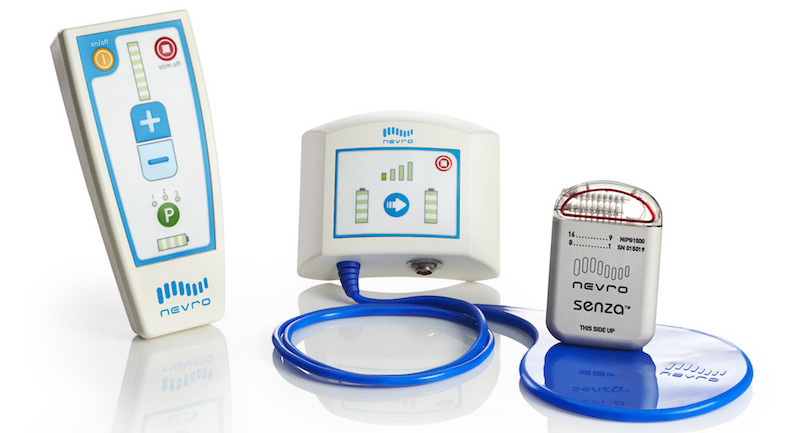If you have been looking for chronic pain relief and haven’t found it with more conservative treatments, chances are good you’ve considered a spinal cord stimulator. This device can help you get back to pain-free daily activities. It can also bring up a lot of questions, though. It’s always good to talk to your doctor for specific questions relating to your pain condition, but Arizona Pain can help. Whether you are already living with a spinal cord stimulator or still weighing your options, here’s answers to some of your most frequently asked questions about this pain management approach.
What’s it like living with a spinal cord stimulator?
Living with a spinal cord stimulator for many people means living with less than half the pain they experienced in the past. That’s the short answer, but it holds true for the majority of patients who are good candidates for spinal cord stimulation. People living with chronic pain report that they are able to get back to their normal lives, with less pain and more mobility.
A spinal cord stimulator is an implanted device that is controlled outside the body by the patient. A remote with an antenna controls the level of stimulation that interrupts pain signals. This means that when it is successful, the patient can resume the majority of their regular activities without worrying about chronic pain. While it is unclear exactly how spinal cord stimulators work to relieve pain, it seems to be a combination of mechanisms at work in the body and the brain.
Living with a spinal cord stimulator also means in many cases that patients take fewer opioids and other pain medications. Less medication, less pain, more of the life you want to lead – these are all possible with a spinal cord stimulator.
Am I a good candidate for SCS?
Spinal cord stimulators are not for just any type or severity of pain. Typically, patients who are researching living with spinal cord stimulators have traveled the long road of more conservative treatments without success.
Because it involves a two-stage, surgical process, however, spinal cord stimulation is not a first-line treatment of chronic pain for the vast majority of people. Many people first try to resolve their pain with physical therapy, activity modification, or chiropractic care. If those and other minimally-invasive interventions don’t work, then your doctor may recommend a spinal cord stimulator.
Once it becomes apparent that you need a more interventional approach, the first step is to have a trial stimulator implanted. If this relieves your pain after a set period of time, then you can talk to your doctor about moving to a more permanent implant.
The most common conditions treated with spinal cord simulation include:
- Back pain
- Failed back surgery syndrome
- Inflammation of the membrane that covers the brain and spinal cord (arachnoiditis)
- Angina
- Spinal cord injuries
- Nerve pain (e.g., diabetic neuropathy and cancer-related neuropathy from radiation, surgery, or chemotherapy)
- Peripheral vascular disease
- Complex regional pain syndrome
- Pain after an amputation
- Visceral abdominal pain and perineal pain
That said, even if you have tried other treatments without relief, a spinal cord stimulator may not be for you if you meet the following criteria:
- You are pregnant
- Your spinal cord stimulator trial didn’t relieve your pain
- You are not able to operate your spinal cord stimulator system
- You have a high risk of surgical complications
Each patient and their pain is very different. The best way to determine if you’re a good candidate for spinal cord stimulation is to talk to your doctor about all of your options. Not only will they have a good awareness of your treatment history, but they will also be able to recommend FDA-approved devices for your specific pain condition.
What are the major types of spinal cord stimulators, and how do they work?
There are three main types of spinal cord stimulators:
- Traditional spinal cord stimulators
- Burst spinal cord stimulators
- High frequency spinal cord stimulators
Within these categories, spinal cord stimulators also offer different battery options.
- Implantable pulse generator (IPG): This battery must be replaced, which means surgery to remove the device is required
- Rechargeable implantable pulse generator: Works like a conventional IPG but the device does not have to be removed to swap out a dead battery
- Radiofrequency stimulator: This device is less common, but it uses a battery outside the body
Let’s look at each of these types in more detail.

Traditional spinal cord stimulators
A traditional spinal cord stimulator is by far the most common type of device to treat pain.
This type produces a gentle tingling or buzzing sensation (referred to as paresthesia). This paresthesia replaces the pain sensations and provides a distraction from any pain that remains.
Burst spinal cord stimulators
These low-frequency spinal cord stimulators also use electrical impulses delivered in short bursts (rather than in a constant stream).
This mimics the way in which nerves communicate naturally and can be good for patients who have pain in one single area.
High frequency spinal cord stimulators
High frequency spinal cord stimulators use electrical impulses of 1 kHz and above to reduce pain without tingling sensations.
Some patients and doctors prefer high frequency spinal cord stimulation because it requires less intense stimulation to provide relief on the very first day, without the paresthesia that some patients find uncomfortable.
How do I operate my spinal cord stimulator?
Your spinal cord stimulator settings control the frequency and intensity of electrical impulses as well as the area that the impulses cover. Your doctor will set the initial pulse, but you can change it with a handheld controller as needed. You can typically also program your stimulator to different levels at different points in the day. For example, if you need less intensity at night, there’s a setting you can program for that.
Keep your controller with you to ensure the proper levels of relief no matter where you go and what you’re doing. Your doctor will walk you through the specific programming procedures and make sure you’re comfortable with the device. This ensures the best level of pain relief.
How do I care for my stimulator?
Caring for your spinal cord stimulator is about caring for your remote, charging your device’s battery correctly, and keeping track of any changes in your pain levels and the sensations from the stimulator.
Keep your remote in a temperate environment (not colder than 50° and not warmer than 104°). Clean as needed with a soft cloth – no abrasives needed.
Rechargeable spinal cord stimulator batteries have specific instructions depending on the manufacturer, so pay attention to the manual’s instructions. Reach out to your doctor if you need assistance with charging. For batteries that need to be surgically changed, regular visits to your doctor can help keep track of the timeframe for this.
As to the proper function of the device, it helps to keep track of pain levels and relief in a pain journal. This helps you see what activities affect your pain, which levels of electrical impulse work best for you, and if anything changes. Share these notes with your doctor for finetuning your pain management plan.
How do I change my spinal cord stimulator settings?
Each spinal cord stimulator’s settings can be changed using the remote.
Your doctor will initially set your level of stimulation (plus its frequency and intensity). Later, you can change these as needed. Follow your device’s instruction manual for specific steps to do this, and reach out to your doctor if you have any difficulties.
How to turn off spinal cord stimulator?
Your spinal cord stimulator is turned off and on with the remote control. Each device is different, but they all come with detailed instructions.
Your doctor will go over these with you and answer any questions specific to your device.
Are there any travel restrictions with a spinal cord stimulator?
There are some things to be aware of when traveling with an implanted spinal cord stimulator. Your spinal cord stimulator will be detected by X-ray machines at the airport. Your doctor will provide you with a medical ID card that authorizes and explains the device.
Additionally, driving is not recommended when your spinal cord stimulator is powered on. Although the electrical impulses are not painful, they can be distracting when driving.
Some of the high frequency spinal cord stimulators are safe to drive with while powered on, as they provide a level current of electrical impulse that is not startling. If driving is a major part of your life, talk to your doctor about finding the stimulator that works for you.

How do I stay safe with a spinal cord stimulator?
Spinal cord stimulators should not cause pain or discomfort, but a sudden change in position can sometimes cause the sensation of the electrical impulse to intensify. Avoid changing position suddenly to prevent unwanted intensity.
Additionally, avoid activities that lead to excessive pressure in the area of the stimulator and leads. This protects the device from damage and ensures a comfortable level of stimulation.
As noted above, turn off your device when driving, but feel free to keep it active as a passenger. As a general rule, in situations where you might be dangerously distracted by the electrical pulses, it’s best to keep it switched off. Likewise, if the electrical impulses become uncomfortable, turn your device off and give your doctor a call.
Can I get an MRI with a spinal cord stimulator?
Some spinal cord stimulators can cause injury with an MRI, but there are some that are perfectly safe.
Make sure all of your healthcare providers are aware of your specific spinal cord stimulator. They also need to know its location before getting an MRI.
Can you go swimming with a spinal cord stimulator?
During your spinal cord stimulator trial, you may not swim, take a bath, or otherwise get your back wet. Good news, though: this is temporary.
When your permanent spinal cord stimulator is in place and the sutures are healed, swimming is okay.
Can you see the spinal cord stimulator when it’s implanted?
Some people report that they can feel the device when they apply light pressure with their fingers. The device itself is not generally visible.
How often do spinal cord stimulators need to be replaced?
The lifespan of a spinal cord stimulator is more about the battery than the device itself.
Those devices with non-rechargeable batteries generally need to be surgically replaced every two to five years. If you have a rechargeable device, the lifespan is ten years or more. In this case, you need to remember to charge your battery appropriately.
Learn more about spinal cord stimulation
Chronic pain can feel like one long struggle, but it doesn’t have to be that way. Even when you’ve tried many options over the years, there is still hope. Spinal cord stimulation may be the solution to your intractable pain.
Living with a spinal cord stimulator means potentially less pain, less medication, and more of the life you want to be living. If you have questions and want to find out how a spinal cord stimulator can help you get your life back, Arizona Pain can help. Get in touch today!
